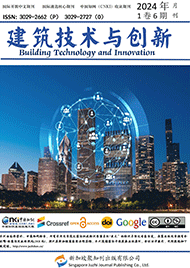
 info@juzhikan.asia
info@juzhikan.asia
 info@juzhikan.asia
info@juzhikan.asia
不同密度高聚物注浆材料受压应力应变本构模型研究
龚泰龙 1 刘洋 1 李翔 1 张林波 2
1 中交一公局集团有限公司重庆运营区域总部,重庆,404699;
2 重庆锦程工程咨询有限公司,重庆,401121;
摘要:道路沉降严重影响行车平顺性及行车安全,如何快速有效处治道路病害,最大限度降低对道路通行的影响 是道路运营阶段亟待解决的重要问题。高聚物注浆非开挖沉降修复技术利用注浆材料混合后迅速膨胀固化的特点, 能达到快速填充脱空、顶升结构、修复沉降的目的。对于修复后道路而言,高聚物的受压应力应变本构模型是准 确模拟道路动力响应的重要条件。基于此,本文探讨了不同密度高聚物注浆材料在单轴压力作用下的破坏过程, 通过开展不同密度的高聚物单轴压缩试验,得到了高聚物弹性模量、屈服强度、屈服应变与受压应力应变曲线随 高聚物密度的变化规律,并提出了高聚物注浆材料在单轴压力作用下的应力应变本构模型,结果表明预测值与实 验数据吻合良好。
关键词:高聚物;密度;应力应变曲线;单轴压缩
参考文献
[1]李会安.非开挖式地聚合物注浆技术研究与应用 [D].2015.
[2]马雪,王复明,郭成超,张继春.聚氨酯高聚物隧道注浆材料抗剪强度试验研究[J]. 交通科技,2020(06): 93-96.
[3]祝争艳,周文,刘海婷,詹从明.半刚性基层裂缝注 浆材料性能及其机理研究[J].公路工程,2020,45(06): 185-189.
[4]王安辉,丁选明,章定文.在役高速公路软基不均匀 沉降病害注浆处治技术[J].东南大学学报(自然科学 版),2017,47(02):397-403.
[5]张磊,问鹏辉,王朝辉,狄升贯,殷卫永.道路非开挖 注浆加固补强材料研究进展[J]. 材料导报,2017,31 (21):98-105.
[6]黄瑞, 胡晓勇. 公路隧道衬砌病害原因分析及处 治方法的探讨[J]. 公路交通科技(应用技术版), 201 6, 12(05): 30-32.
[7]张森. 公路隧道结构破损原因及加固效果分析[D]. 贵州大学, 2015.
[8]Wisconsin Department of Transportation. Eva luation of The URETEK Method of Pavement Lift ing[R]. 2007.
[9]SHI Mingsheng, WANG Fuming, LUO Jing. Exper imental Research on Compressive Strength of Po lymer Grouting Material under Different Temper atures[J]. Journal of Wuhan University of Tech nology (Materials Science Edit ion), 2010, 25 (6): 962-965.
[10]University of Hanover, Germany. Technical Information about Uretek Chemical Resistance t o Aging[R]. 2009.
[11]Buzzi O, Fityus S, Sasaki Y, et al. Struct ure and properties of expanding polyurethane f oam in the context of foundation remediation i n expansive soil[J]. Mechanics of Materials, 2 008, (40): 1012-1021.
[12]王复明. 大坝技术及长效性能研究进展[C], 北 京,中国水利水电出版社, 2011, 381-385.
[13]URETEK Technical Staff in collaboration wi th Padua University IMAGE Department. Technica l notes and laboratory test results on the lat est generation of the Uretek Geoplus expanding resin[R]. 2004.
[14]石明生, 王复明, 刘恒, 等. 堤坝高聚物定向劈 裂注浆试验与有限元模拟[J]. 水利学报,2016, 47 (8): 1087-1092.
[15]Shen Y, Wang Y, Yang Y, Sun Q, Luo T, Zhan g H. Influence of surface roughness and hydrop hilicity on bonding strength of concrete-rock interface[J]. Construction and Building Materi als, 2019, 213:156-166.
[16]Li B, Lam E. Influence of interfacial char acteristics on the shear bond behavior between concrete and ferrocement [J]. Construction an d Building Materials, 2018, 176: 462-469. [17]Shi J, Zhu H, Wu Z, Wu G. Experimental stu dy of the strain rate effect of FRP sheet-conc rete interface[J]. China Civil Engineering Jou rnal, 2012, 45 (12): 99-107.
[18]雷建华,徐斌,何旭辉. 改性聚氨酯混凝土受压性 能及本构关系研究[J]. 铁道科学与工程学报,2022.
[19]薛刚,孙立所,侯玮华,董伟.橡胶混凝土抗折强度 及细观破坏机理研究[J].混凝土,2021,(07),48 -52.
[20]L.J. Gibson, M.F. Ashby, Cellular Solids: Structures and Properties, Cambridge Universit y Press, Cambridge, 1997.
[21]K.H. Safari, J. Zamani, F.J. Ferreira, R.M. Guedes, Constitutive modeling of polycarbonat e during high strain rate deformation, Polym. Eng. Sci. 53 (4) (2012)752–761.
[22]T.R. Kim, J.K. Shin, T.S. Goh, H.S. Kim, J. S. Lee, C.S. Lee, Modeling of elastoviscoplast ic behavior for polyurethane foam under variou s strain rates and temperatures, Compos. Struc t. 180 (2017) 686–695.
[23]K.C. Rusch, Load-compression behavior of b rittle foams, J. Appl. Polym. Sci. 14 (1970) 1 263–1276.
[24]M. Avalle, G. Belingardi, A. Ibba, Mechani cal models of cellular solids: Parameters iden tification from experimental tests, Int. J. Im pact Eng. 34 (2007) 3-27.
[25]K. Liu, W. Liang, F. Ren, J. Ren, F. Wang, H. Ding, The study on compressive mechanical properties of rigid polyurethane grout materia ls with different densities, Constr. Build. Ma ter. 206 (2019) 270-278.